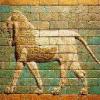Posted 05 February 2012 - 02:16 AM
Resveratrol Is a Nonselective Phosphodiesterase Inhibitor
The intracellular levels of cAMP are determined by the activities
of ACs, which synthesize cAMP from ATP, and cyclic nucleotide
PDEs, which hydrolyze cAMP or cGMP to AMP or GMP, respectively.
We measured the effect of resveratrol on the activities of
representatives of all three major subclasses of mammalian
ACs. As shown in Figure S3A, resveratrol had no effect on AC
activity, either in the basal state or in the activated state, suggesting
that resveratrol increases cAMP levels by inhibiting PDEs.
The PDE superfamily is comprised of 11 types of PDEs
(PDE1–11) of which multiple isoforms exist. PDEs have different
substrate specificities: PDEs 4, 7, and 8 are cAMP-selective
hydrolases, PDEs 5, 6, and 9 are cGMP-selective hydrolases,
and PDEs 1, 2, 3, 10, and 11 can hydrolyze both cAMP and
cGMP to varying degrees. Multiple members of the PDE superfamily
are usually expressed in each cell. We measured the activities
of recombinant PDEs 1, 2, 3, 4, and 5 in the presence
________
of resveratrol. We found that resveratrol inhibited PDE1
(IC50 �6 mM), PDE3 (IC50 �10 mM), and PDE4 (IC50 �14 mM)
but did not affect the activity of PDEs 2 or 5 (Figure 4A).
To determine how resveratrol inhibits PDEs, we measured the
effect of cAMP and resveratrol on the kinetics of recombinant
PDE3 activity (Figure 4B). At high concentrations of cAMP, the
inhibitory effect of resveratrol on PDE3 disappeared, suggesting
that resveratrol is competing with cAMP, and a Lineweaver-Burk
plot is consistent with a competitive inhibition mechanism (Figure
4C). To directly demonstrate that resveratrol competes
with cAMP in its binding site, we incubated PDE3 with the
fluorescent cAMP analog 8-azido[DY547]-cAMP, which crosslinks
to its binding site when stimulated with UV, in the presence
of increasing concentrations of either resveratrol or cAMP. Both
resveratrol and cAMP competed with 8-azido[DY547]-cAMP for
the binding site in PDE3 (Figure 4D). Because the binding of
8-azido[DY547]-cAMP to PDE3 is irreversible, whereas the
binding of resveratrol or cAMP is reversible, the data shown in
Figure 4D are an underestimation of the actual competitiveness
of cAMP or resveratrol. A simulation of the docking of resveratrol
into the catalytic pocket of PDE3 suggests that resveratrol may
fit into the catalytic pocket in two orientations (Figures S3B–
S3E). Taken together, these findings support the conclusion
that resveratrol increases cAMP levels by competitively inhibiting
PDEs.
----------
Resveratrol Activates AMPK and Increases
Mitochondrial Biogenesis by Inhibiting PDEs
By treating myotubes with specific PDE3 and PDE4 inhibitors,
we determined that 76% of the total basal PDE activity was
attributable to PDE4 and 18% to PDE3 (Figures 5A and S4). To
corroborate our in vitro biochemical findings that resveratrol
inhibits PDEs, we sought genetic evidence by using a PDE4
mutation. Previously, it has been shown that the upstream
conserved regions (UCRs) of PDE4 increase the sensitivity of
PDE4 to competitive inhibitors, whereas the catalytic domain
of PDE4, which is missing the UCRs, is more resistant to the
known competitive inhibitors (Burgin et al., 2010). We found
that the UCRs of PDE4 are also important for inhibition by resveratrol
because the resveratrol IC50 of the PDE4 catalytic domain
was approximately 2.4-fold higher than that of the full-length
PDE4 (�33 mM versus �14 mM) (Figure 5B). If resveratrol
activates AMPK by inhibiting PDE4, resveratrol-induced phosphorylation
of ACC and AMPK in myotubes expressing the
PDE4 catalytic domain should be reduced compared to those
expressing full-length PDE4. As shown in Figure 5C, this was
indeed the case.
If the metabolic effects of resveratrol result from inhibiting
PDEs, a known PDE inhibitor should produce metabolic effects
very similar to those produced by resveratrol. Because PDE4
makes up most of the PDE activity in myotubes, we treated
_____
myotubes with the PDE4 inhibitor rolipram and found that rolipram
increased cAMP to levels similar to those induced by resveratrol
in myotubes (Figure 5D). Like resveratrol, rolipram
stimulated the phosphorylation of AMPK and ACC in an
Epac1-dependent manner (Figure 5E). To demonstrate that rolipram
can activate AMPK in vivo, we treated mice with rolipram
and harvested skeletal muscle. As shown in Figure 5F, rolipram-
treated mice had higher levels of phosphorylated AMPK
and ACC than vehicle-treated mice. Like resveratrol, rolipram
increased NAD+ levels (Figure 5G) and increased PGC-1a deacetylation
(Figure 5H), suggesting that rolipram increased
Sirt1 activity.
To test whether rolipram can reproduce the metabolic effects
of resveratrol in vivo, we determined the effect of rolipram (2 mg/
kg/day) on C57BL6/J mice fed with an HFD. After 12–14 weeks
of treatment, we isolated skeletal muscle and measured the
mRNA levels of genes that are known to be induced by resveratrol
and AMPK, such as eNOS, PGC-1a, and others important for
mitochondrial biogenesis. We found that rolipram consistently
increased the mRNA levels of these genes (Figure 5I). In agreement
with this, treatment with resveratrol, rolipram, or cAMP
induced mitochondrial biogenesis in myotubes to comparable
levels (Figure 5J). Rolipram and resveratrol also increased mitochondrial
content to similar levels in mouse skeletal muscle (Figure
5K). To determine whether increased mitochondrial function
improved exercise tolerance, we exercised rolipram-treated
mice on a treadmill. Rolipram-treated mice ran a significantly
greater distance on a treadmill before exhaustion than control
mice (445 ± 19mversus 268 ± 50 m) (Figure 5L). Taken together,
these findings indicate that rolipram and resveratrol have very
similar effects on mitochondrial biogenesis in skeletal muscle.
PDE Inhibition Protects against Diet-Induced Obesity
and Glucose Intolerance
The similarity between the effects of rolipram and resveratrol
also extended to WAT. As was the case with resveratrol-treated
mice (Baur and Sinclair, 2006; Um et al., 2010), the phosphorylation
levels of AMPK and ACC were increased in the WAT of
rolipram-treated mice (Figure 6A). C57BL6/J mice treated with
rolipram were resistant to weight gain on an HFD (Figure 6B)
and had less fat content (Figure 6C) even though their food intake
was similar to that of control mice (Figure 6D). Decreased weight
gain despite normal food intake suggests that rolipram increased
the metabolic rate. Because rolipram, like resveratrol and 007,
increased the oxygen consumption rate (Figure 2D, right) and
fat oxidation in myotubes (Figure 2E), we measured the oxygen
consumption rate in rolipram-treated mice. The oxygen
consumption rate was increased in rolipram-treated mice (Figure
6E), but physical activity levels were not affected (Figure 6F),
indicating that rolipram increased the basal metabolic rate.
Consistent with this, both resveratrol- and rolipram-treated
mice had higher body temperatures in the fasting state than
control mice (Figure 6G). Rolipram, like resveratrol (Um et al.,
2010), increased the expression levels of thermogenic genes
such as uncoupling proteins (UCPs) and PGC-1a in the adipose
tissue (Figure 6H).
PGC-1a increases ROS scavenging capacity (St-Pierre et al.,
2003). Consistent with rolipram-treated mice expressing higher
levels of PGC-1a, rolipram-treated mice had lower ROS levels
(Figure 6I). Considering all of the metabolic changes that rolipram
produced, including the reduction of ROS and fat mass
and increased mitochondrial function, we expected that rolipram
would improve glucose tolerance. Indeed, rolipram-treated mice
were more glucose tolerant than were control mice (Figure 6J).
Glucagon-like peptide-1 (GLP-1), which is secreted from the
gut, has antidiabetogenic activities, and GLP-1 analogs, as
well as drugs that increase the endogenous GLP-1 levels, are
part of type 2 diabetes therapy. The expression of GLP-1 is positively
regulated by cAMP (Gevrey et al., 2002) and therefore may
be induced when either resveratrol and rolipram inhibits PDEs.
Supporting this idea, we found that both resveratrol and rolipram
increased serum levels of GLP-1 by almost 20% (Figure 6K).
Together, these results indicate that both resveratrol and
rolipram may protect against type 2 diabetes by diverse mechanisms
including hormonal regulation.
DISCUSSION
By demonstrating that resveratrol activates the cAMP-Epac1-
AMPK-Sirt1 pathway, this study, in conjunction with previous
studies (Beher et al., 2009; Borra et al., 2005; Kaeberlein et al.,
2005; Pacholec et al., 2010), explains how resveratrol activates
Sirt1 without directly targeting it. Although resveratrol was
initially shown to directly activate Sirt1 in an assay that utilized
a fluorophore-linked substrate (Howitz et al., 2003), our studies
show that resveratrol indirectly activates Sirt1 in vivo due to its
effect on cAMP signaling.
Our findings on the mechanism of resveratrol action have
implications for other known putative Sirt1 activators such as
SRT1720, SRT2183, and SRT1460 (Milne et al., 2007; Pacholec
et al., 2010). Like resveratrol, they were discovered as Sirt1 activators
by using the fluorophore-tagged substrate and only
exhibit Sirt1 activation in the presence of fluorophore-modified
substrate. Thus, it is likely that they may also activate Sirt1 via
an upstream target in vivo. Because the metabolic effects of
SRT1720 are nearly identical to those of resveratrol (Milne
et al., 2007; Feige et al., 2008), it is tempting to speculate that
these compounds, or at least SRT1720, act via pathways similar
to those of resveratrol.
cAMP signaling is highly complex, and its outcomes vary depending
on the effector activated by cAMP and on other factors
including the cell type, the cellular compartment of cAMP action,
and the duration and intensity of cAMP signaling. cAMP is a key
mediator of metabolic regulation, and the identification of PDEs
as resveratrol targets might explain how resveratrol mimics
some aspects of CR. Nutrient deprivation increases cAMP levels
as a consequence of increased glucagon and catecholamine
signaling and decreased insulin/IGF-1 signaling (Rondinone
et al., 2000; Selawry et al., 1973). Resveratrol, by increasing
cAMP levels and activating Epac1, may induce some of the pathways
that are normally induced during CR (Figure 7). The positive
health benefits of PDE4 inhibitors, such as improved memory
(Burgin et al., 2010) and protection against aging-related
diseases such as Alzheimer’s (Smith et al., 2009) and Parkinson’s
(Yang et al., 2008) diseases, have been demonstrated in
animal models. It is therefore possible that PDE4 inhibitors
____
may be useful for treating metabolic diseases and other aging related
diseases in humans.
______
10 nM [3H]cAMP (45000 cpm) or [3H]cGMP as substrates. Less than
10%–15% of the substrates were hydrolyzed during the PDE reaction.
Portions of solubilized cell lysates were assayed for PDE activity by incubation
with resveratrol (0–100 mM) or with specific PDE inhibitors. Recombinant
PDE1 (10 ng) activity was assayed by using 4 mg/ml calmodulin and
0.8 mM Ca2+ together with [3H]cAMP as substrate in the reaction mixture.
Recombinant PDE2 (15 ng) activity was assayed in the presence of 1 mM
cGMP, which activated it by �3 fold. Activities of recombinant PDE3
(1 ng) and PDE4 (1 ng) were assayed by incubation in a reaction mixture
containing 1 mg/ml BSA, with [3H]cAMP. Recombinant PDE5 (150 ng)
activity was assayed using [3H]cGMP as substrate. PDE activity is expressed
as pmol of cAMP or cGMP hydrolyzed/min/mg protein. The
PDE3 inhibitor cilostamide and the PDE4 inhibitor rolipram were used to
define PDE specificity. Recombinant full-length PDE4D was purchased
from Signalchem, and the recombinant PDE4D catalytic domain was
purchased from Enzo Life Sciences. To measure the activities of PDE3 or
PDE4 in C2C12 lysates, PDE activity was measured in the presence of
1 mM cilostamide or 10 mM rolipram.
_____
Animal Experiments
All experiments were approved by the NHLBI ACUC (Animal Care and Use
Committee). C57BL/6J mice were originally purchased from Jackson Laboratory.
Four- to six-week-old male mice were housed with a 12 hr light-dark cycle
(light on 6 am–6 pm) with free access to food and water. For all rolipram-related
studies, mice were dosed once daily by oral gavage with 2 mg/kg/day rolipram
(Enzo Life Sciences) or with saline and were fed a HFD (40% calories from fat,
Research Diets) for up to 14 weeks. To measure the effect of resveratrol on
cAMP production, C57BL/6J mice were injected (intraperitoneally [i.p.]) with
resveratrol (20 mg/kg body weight) or with DMSO (vehicle). For studies
involving chronic resveratrol treatment, C57BL/6J mice were fed a HFD containing
resveratrol (400 mg/kg/day) for 14 weeks.
Metabolic Measurements
Body weight and caloric intake were monitored weekly. Plasma glucose was
measured by using a glucometer (Ascensia). For the glucose tolerance test,
mice were fasted for 16 hr, and 1 mg/g glucose was injected i.p. Blood glucose was measured at 0, 15, 30, 45, 60, and 90 min after injection. Prior to the treadmill endurance tests, the mice were trained for 3 days by running on an Exer-3/6 mouse treadmill (Columbus Instruments) at 10 m/min for 5 min.
For the endurance test, the treadmill was set at a 15� incline, and the speed was
increased in a stepwise fashion (10 m/min for 10 min followed by 14 m/min
for 5 min and then the final speed of 18 m/min). The test was terminated
when mice reached exhaustion, which was defined as immobility for more
than 30 s. Locomotor activity of mice was measured by photobeam breaks
by using the Opto-Varimex-4 (Columbus Instruments). Indirect calorimetry
was performed using Oxymax chambers (Columbus Instruments). All mice
were acclimatized for 24 hr before measurements. Resting metabolic rate
was determined by calculating the average energy expenditure at each
30 min time point during a 24 hr period.


















































